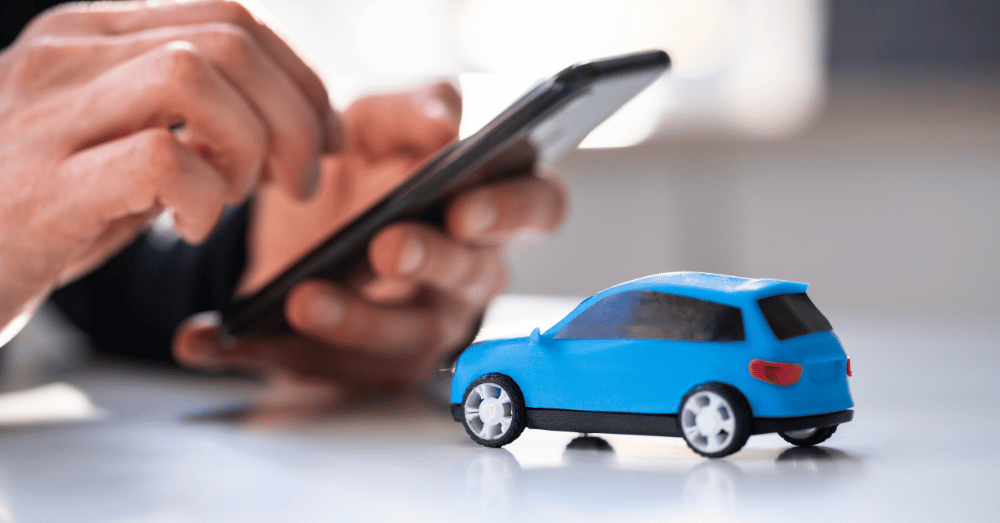Car buying has changed dramatically. Today’s buyers start with smartphones, not dealer lots.This transformation represents more than convenience—it’s reshaping how consumers make one of their largest financial decisions.
Key Takeaways
• Digital dominance: 92% of buyers research vehicles online first, with virtual tours and 360-degree views replacing initial showroom visits
• Streamlined financing: Online platforms now offer 30-second approvals and 70% faster purchase times through integrated digital tools
• Hybrid experience: While buyers start online, 90% still want in-person test drives, creating a seamless blend of digital convenience and physical interaction
The convergence of digital retailing, online financing, and virtual experiences is creating an automotive ecosystem where online and offline shopping blend seamlessly.
The Digital-First Consumer Revolution in Car Buying
Modern car buyers arrive at dealerships with more information than ever before. By the time customers reach a dealership, they’ve already completed the bulk of their discovery and interest journey online. This shift has created what industry experts call the “messy middle”—a complex web of digital touchpoints where consumers research, compare, and evaluate their options before speaking to a salesperson.
Global automotive e-commerce is expected to experience an annual growth rate of 17.5% during the next decade and reach an estimated market size north of $176 billion by the early 2030s. This growth is driven by consumers accustomed to seamless digital experiences in other aspects of their lives who now expect the same convenience when purchasing vehicles.
The demographic driving this change is telling. Millennials are leading the charge, with 92% starting their research online and 85% preferring digital financing and streamlined processes. However, this isn’t just a generational phenomenon—seven out of ten buyers across all age groups start their journey online, making digital presence essential for market survival.
Virtual Showrooms: Bringing the Lot to Your Living Room
The emergence of virtual vehicle tours and 360-degree showroom experiences represents one of the most visible aspects of the digital transformation. These technologies are revolutionizing how consumers interact with vehicles before setting foot on a dealer lot.
3D virtual tours for car dealerships eliminate the need to visit in person, as customers can explore vehicles online with an immersive interactive experience. Advanced platforms now offer everything from detailed interior walkthroughs to exterior 360-degree views, allowing potential buyers to examine every aspect of a vehicle from their smartphone or computer.
The technology behind these virtual experiences has become increasingly sophisticated. 360 virtual car tours use high-resolution images captured from every angle, integrated into user-friendly interfaces accessible via dealership websites or mobile apps. Some platforms even incorporate augmented reality and virtual reality elements, creating experiences so immersive that customers feel as though they’re actually sitting inside the vehicle.
A forward-thinking Kia dealership, for example, might use these virtual tour technologies to showcase their entire inventory online, allowing customers to explore the interior features of a new Kia Sportage, examine the cargo space of a Sorento, or get a detailed look at the dashboard technology in a Stinger—all from the comfort of their homes. Dealers using virtual tour software can create interactive tours of all their vehicles, add links to purchase pages, and include detailed information about each model’s features and specifications.
The Financing Revolution: Transforming Car Buying from Bank Visits to One-Click Approvals
Traditional auto financing—with its paper applications, multiple bank visits, and days-long approval processes—is rapidly becoming obsolete. Digital platforms now offer personalized loan products, making the financing process faster and more efficient, with some systems providing 30-second approvals at dealerships.
The transformation extends beyond speed to encompass the entire customer experience. Modern credit estimators help customers understand what they can afford while shopping on dealership websites, with pre-qualification features that quickly identify the right cars aligning with the customer’s financial profile. This transparency eliminates much of the stress and uncertainty traditionally associated with auto financing.
Leading automotive manufacturers are pioneering these integrated financing solutions. Mitsubishi’s ClickShop 2.0 represents an industry-first approach, offering personalized shop-by-payment on manufacturer and dealer websites, leveraging prequalification capabilities that allow consumers to see all in-stock vehicles meeting their financing qualifications based on just a soft credit pull. The results are impressive: early implementations show a 70% reduction in time to purchase a vehicle.
This digital financing revolution is particularly appealing to younger consumers. 45% of EV leases go to millennials, driven by tax credits and shorter commitment terms, with digital platforms making the entire process more accessible.

The Omnichannel Experience: Best of Both Worlds
Despite the digital revolution, the automotive industry has learned that completely eliminating physical interactions isn’t the answer. Instead, the future lies in creating seamless omnichannel experiences that blend the convenience of digital tools with the confidence-building aspects of in-person interactions.
Despite the shift toward online brand interactions, visiting physical locations remains a fixed component of the buyer’s journey, with 90% of car shoppers still wanting to view or test drive vehicles in person.
This has led to a fundamental reimagining of the dealer’s role. Modern dealerships provide a seamless customer journey across all platforms, from online browsing to in-store purchases, creating an omnichannel retail experience where customers engage with dealerships online and in-store throughout their buying journey.
The most successful dealerships recognize this hybrid nature of modern car buying. 86% of U.S. consumers want to test-drive a car before buying it, and 74% want to negotiate in-person to get the best deal. However, these same consumers expect their online research, preferences, and financing pre-approvals to seamlessly transfer to their in-person dealership experience.
Technology Integration: The New Competitive Advantage
The integration of advanced technologies is becoming a key differentiator for forward-thinking dealerships. Advanced technologies like AI, machine learning, and predictive analytics analyze customer data across channels, predict needs, personalize communications, and recommend appropriate vehicles.
These technological capabilities extend beyond simple customer relationship management. Modern digital retailing platforms now include comprehensive suites of tools: virtual vehicle tours, online financing applications, trade-in calculators, and even home delivery arrangements, all integrated into a single, seamless experience.
The impact on dealership operations is substantial. Dealerships using digital retailing tools report improved operational efficiency, cost reduction, and better customer insights through detailed analytics on customer behavior and preferences. These insights allow dealers to optimize their inventory, personalize their marketing, and provide more targeted customer service.
Challenges and Adaptation Strategies for the Car-Buying Experience
The digital transformation isn’t without its challenges. Many consumers still experience a “trust deficit” in digital car buying processes, particularly when making such a significant financial commitment. The solution lies not in abandoning digital tools but in using them to enhance transparency and build trust.
Successful dealerships are addressing these concerns through several approaches:
- Transparency First involves providing comprehensive vehicle information, high-quality imagery, and detailed specifications to build consumer confidence in online listings.
- Seamless Integration ensures that customer data, preferences, and progress are maintained as buyers move between online research and in-person interactions.
- Staff Training is essential for providing superior customer experiences, as well-trained staff are better equipped to understand and utilize customer data.
- Flexible Options recognize that 9 out of 10 customers prefer a flexible, personalized car buying experience rather than following a prescribed sales process.
The Road Ahead: What’s Next for Automotive Retail
The evolution of car buying continues. Emerging trends suggest even more dramatic changes ahead:
- Artificial Intelligence Integration involves AI-powered recommendation engines and chatbots becoming more sophisticated, providing personalized vehicle suggestions based on individual preferences and financial situations.
- Augmented Reality Expansion shows AR and VR integration among online car platforms is expected to increase by 50% by 2025, with platforms incorporating these technologies seeing a 20% increase in revenue per user.
- Social Media Influence indicates that more than one in five U.S. consumers say social media has influenced their decision to buy a vehicle, mainly via Facebook, Instagram, YouTube, and TikTok, suggesting that social commerce will play an increasingly important role.
- Subscription and Flexible Ownership Models demonstrate that as consumer preferences shift toward flexibility, new ownership models including subscriptions and short-term leases are gaining traction.
Embracing the Digital Future of Car Buying
The transformation of car buying from a showroom-centered experience to a smartphone-enabled journey represents one of the most significant shifts in automotive retail history. Success in this new landscape requires dealerships to embrace both digital innovation and the enduring human elements of car buying.
The winners will be those who recognize that digital tools don’t replace the human touch—they enhance it. By providing transparent pricing, immersive virtual experiences, streamlined financing, and seamless transitions between online and offline interactions, modern dealerships can meet consumers where they are while building the trust and confidence necessary for such significant purchases.
As the industry continues to evolve, one thing remains clear: the future of automotive retail belongs to those who can successfully blend digital convenience with personal service, creating experiences that are both efficient and engaging. In this new era, the smartphone isn’t replacing the showroom—it’s making the entire car-buying journey better for everyone involved.

